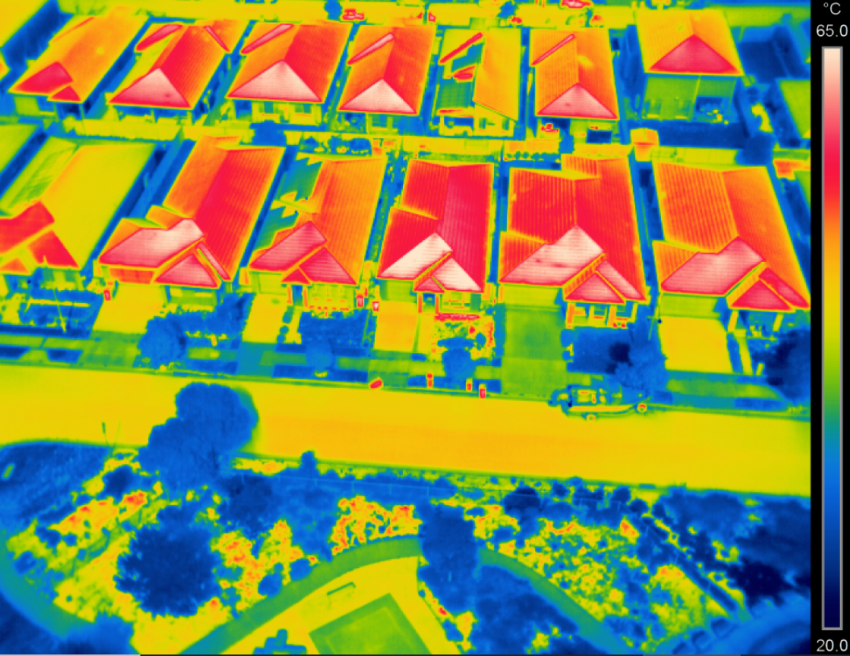
As communities along the east coast reel from the recent devastating floods, the New South Wales government scrapped planning laws aimed at reducing greenhouse gas emissions during and after the construction of new apartments.
At a lunch organised by developer lobby group Urban Taskforce Australia on April 5, planning minister Anthony Roberts announced he was scrapping the Design and Place State Environmental Planning Policy (DP SEPP).
The NSW government then deleted the documents and media releases related to the DP SEPP on its website. The Fifth Estate held copies and re-uploaded them.
Roberts’ decision coincides with release of the April 4 Intergovernmental Panel on Climate Change Mitigation of Climate Change Working Group III report which emphasised it is still possible to limit global warming to 1.5° Celsius.
The report said greenhouse gas emissions from buildings made up 21% of total global emissions in 2019 and described mitigation strategies for reducing the climate change impact of the building industry.
Although it was not a radical planning reform, the DP SEPP aimed to introduce some consideration of sustainability and liveability into planning. It encouraged more communal open space, better sunlight access and natural ventilation to reduce reliance on artificial lighting and air conditioning, and the use of less carbon-intensive building materials in new apartment developments.
It also set out an urban design guide that included planning for climate changed-induced impacts such as heat waves and floods, increasing tree canopy cover and prioritising active transport, such as walking and cycling.
Developer scare campaign
Since former planning minister Rob Stokes introduced the draft legislation in December, developer lobby groups have campaigned to scrap or heavily modify it.
Mirvac and Meriton were strongly opposed to the DP SEPP, as it may endanger their profit margins. The Property Council of Australia, which groups some of the country’s biggest developers, complained the DP SEPP would have “a detrimental impact on housing investment, affordability and job creation”. Developers also said that housing supply would be adversely affected by the new rules.
The argument by developers that planning regulations are holding back housing supply and therefore increasing house prices is a scare campaign.
Planning approvals and building completions in Sydney are at an all-time historical high. Australia produces housing faster than any Organisation for Economic Cooperation and Development countries, and about 94% of planning applications in Sydney are approved within a few months.
The supply of housing is not the main issue. Rather, it is the for-profit speculative housing market geared towards investors that has made housing unaffordable for the majority of people.
As Barry Calvert wrote in The Fifth Estate: “Reducing planning requirements, does not make housing more affordable, it simply kicks cost-of-living down the road for individual businesses and households to deal with, and creates more problems than it solves.”
The DP SEPP would have mandated better consideration of building in high-risk areas, such as flood-prone land, bushfire-prone land or areas exposed to extreme heat.
Instead, the government has chosen to put the lives and health of vulnerable people at risk in the face of worsening floods, bushfires and extreme heat.
People living in high-risk areas also have to bear the brunt of costs due to poor planning and building design, such as higher energy bills and insurance premiums and the cost of rebuilding or relocating after floods.
Climate impacts
Communities in Sydney, particularly Western Sydney, are already feeling the climate-related impacts of poor planning.
The clearing of trees and lack of planting in new developments, large areas of dark, artificial surfaces — such as roads and rooftops — and inadequate spacing between buildings contribute to the urban heat island effect. This means that the temperatures experienced can be far higher than ambient air temperatures.
Those living in Penrith experienced a heat wave in January 2020 with air temperatures of nearly 50°C. The radiant heat — a measure of temperature radiated from surfaces — from car parks was recorded at nearly 80°C. Surface temperatures of playground equipment were recorded at 100°C.
The severity and frequency of extreme heat events will only get worse. A new report by The Australia Institute predicts people living in Western Sydney could experience up to 31 days a year of temperatures over 35°C in 2070, compared to the historical average of nine.
Heat waves have killed more people in Australia than all other natural disasters combined.
The NSW branch of the Australian Institute of Architects (AIA) condemned Roberts’ decision. A spokesperson for AIA said the DP SEPP was a positive step towards a “more sustainable, affordable and resilient future for the built environment”, and it being scrapped was “a slap in the face for our communities, especially those recovering from extreme weather”.
“We know the science tells us these events will become more common and more severe. To scale back these practical requirements for sustainability and liveability is unfathomable.”
Better Planning Network Convenor Jan Primrose said: “The Minister should not have summarily dumped the draft just because development industry lobbyists whinged that it could be too difficult for them, or would reduce their exorbitant profits. Public interest should take precedence over vested interests.”